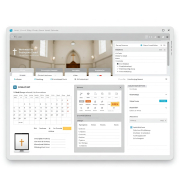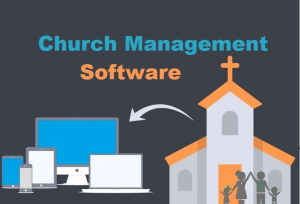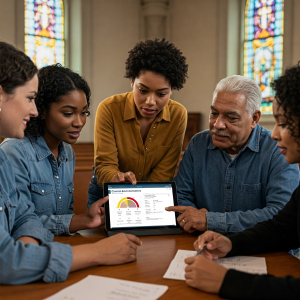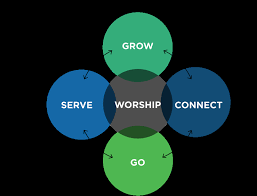Beyond the Collection Plate: Innovative Ways to Encourage Generosity in Your Kenyan Church in 2025
While the traditional collection plate remains a familiar practice in many Kenyan churches, fostering a culture of generosity extends far beyond this weekly ritual. In an increasingly digital and diverse society, exploring innovative and engaging ways to encourage giving can lead to greater financial stability, increased participation in ministry, and a deeper sense of ownership and commitment among congregants. This blog post explores creative strategies that Kenyan churches can implement to inspire generosity beyond the Sunday offering.
The act of giving in the church is rooted in spiritual principles of gratitude, stewardship, and participation in God’s work. However, the methods through which people give are evolving. By embracing a variety of giving options and communicating the impact of their contributions effectively, Kenyan churches can connect with a wider range of givers and cultivate a more generous community.

Beyond the Collection Plate
Understanding the Landscape of Giving in Kenya:
Several factors influence giving patterns in Kenya:
- Mobile Money Dominance: M-Pesa and other mobile money platforms are widely used across Kenya, offering a convenient and accessible way for people to transact.
- Growing Digital Literacy: An increasing number of Kenyans are comfortable using digital technologies for various aspects of their lives, including financial transactions.
- Generational Differences: Different generations may have varying preferences for how they give, with younger individuals often favoring digital options.
- Emphasis on Impact: Many givers want to see the tangible impact of their contributions and understand how their money is being used to further the church’s mission.
- Community and Social Responsibility: Kenyans often have a strong sense of community and may be motivated to give to support the church’s social outreach and community development initiatives.
Innovative Strategies to Encourage Generosity:
Here are some innovative strategies that Kenyan churches can consider implementing to encourage generosity beyond the traditional collection plate:
-
Embrace Mobile Money Giving:
- M-Pesa PayBill Numbers: Prominently display the church’s M-Pesa PayBill number in services, on the church website, social media, and in printed materials.
- QR Codes: Utilize QR codes that congregants can scan with their phones to easily access the PayBill option.
- Automated Giving: Encourage recurring mobile money donations for consistent support.
-
Offer Online Giving Platforms:
- Dedicated Church Website Giving Pages: Integrate secure online giving platforms into the church website, allowing members to donate via credit/debit cards or mobile money.
- Church Apps: Develop a church app with a built-in giving feature for easy and convenient donations.
-

Beyond the Collection Plate
Highlight the Impact of Giving:
- Testimonials and Stories: Share stories and testimonies of how church ministries and outreach programs are making a difference in the lives of individuals and the community, directly linking these successes to the generosity of the congregation.
- Ministry Updates: Regularly provide updates on the progress and impact of various church initiatives, showcasing how donated funds are being utilized.
- Visual Reports: Use infographics and visual reports during services or in newsletters to illustrate the financial health of the church and the allocation of resources.
-
Create Specific Giving Opportunities:
- Project-Based Giving: Instead of general appeals, highlight specific projects or needs (e.g., funding a new children’s ministry program, supporting a community outreach initiative, purchasing new equipment) and allow members to contribute directly to these areas.
- Designated Funds: Establish designated funds for specific ministries or purposes, allowing givers to direct their contributions to areas they are passionate about.
-
Make Giving Engaging and Interactive:
- Giving Kiosks: Consider setting up user-friendly giving kiosks in the church lobby where members can make donations using cards or mobile money.
- Text-to-Give Options: Implement a text-to-give system that allows members to donate via SMS.
- Peer-to-Peer Fundraising: Empower members to create their own fundraising pages to support specific church initiatives.
-
-
Educate on Biblical Principles of Giving:
- Sermon Series on Stewardship: Preach engaging sermon series that explore the biblical principles of generosity, stewardship, and the blessings of giving.
- Workshops and Seminars: Conduct workshops or seminars on financial stewardship and the importance of giving to God’s work.
-
Cultivate a Culture of Gratitude and Appreciation:
- Acknowledge Contributions: Express sincere gratitude for all gifts, both large and small, through verbal acknowledgments (where appropriate), thank-you notes, or online acknowledgments.
- Celebrate Generosity: Periodically celebrate the collective generosity of the congregation and the impact it is having.
-
Offer Diverse Ways to Give Beyond Monetary Donations:
- Volunteer Opportunities: Highlight opportunities for members to give their time and talents to various church ministries.
- In-Kind Donations: Communicate needs for specific non-monetary donations (e.g., supplies for outreach programs, items for the church facility).
-

Beyond the Collection Plate
Promote Transparency and Accountability:
- Regular Financial Reports: Provide regular and transparent financial reports to the congregation, outlining income and expenses.
- Independent Audits: Consider conducting independent audits to ensure financial accountability and build trust.
-
Personalize the Giving Experience:
- Giving Statements: Provide members with regular giving statements for their records.
- Follow-Up and Engagement: Where appropriate, follow up with givers to express appreciation and provide updates on the impact of their contributions.

Beyond the Collection Plate
Conclusion: Cultivating a Generous Heart in the Kenyan Church:
Encouraging generosity in your Kenyan church is an ongoing process that requires creativity, intentionality, and a focus on connecting giving with the church’s mission and impact.
By moving beyond the traditional collection plate and embracing innovative methods that resonate with the local context and the preferences of your congregation, you can cultivate a culture of generosity that fuels ministry, strengthens community, and deepens the spiritual lives of your members.
Remember that the goal is not just to increase financial contributions but to nurture generous hearts that are active in God’s work.























